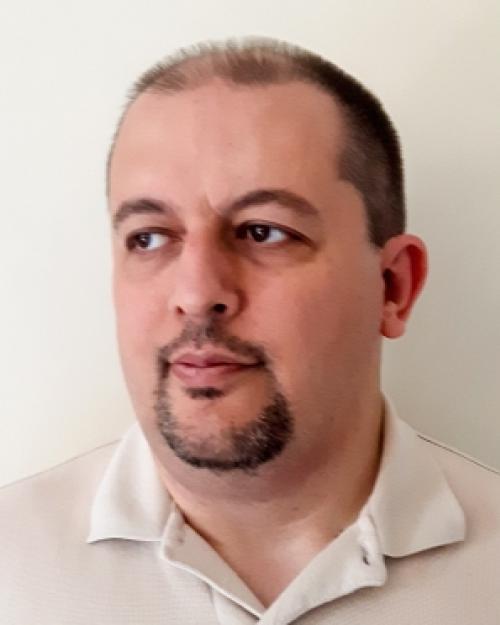
Softwarization and Virtualization for Satellite Communications and Services
Claudio Sacchi
Presentation Menu
As softwarization and virtualization are emerging as key components of modern networking architectures, application and extension of those concepts towards satellite communication systems represents a promising field, opening unprecedented opportunities. Indeed, adaptability and on-the-fly reconfigurability will represent the major functionalities enabled by satellite systems softwarization.
The course will aim at addressing the basic concepts and opportunities provided by Software Defined Networking (SDN) and Network Function Virtualization (NFV) in order to integrate them in the design of future satellite communication systems. The course will be divided into three sections. Section I will describe the softwarization and virtualization concepts and enabling technologies. In this section, after briefly describing the current state-of-the-art and directions in satellite communications, the course will focus on analyzing three basic concepts: Software Defined Radios (SDR), Software Defined Networks (SDN) and Network Function Virtualization (NFV). Section II will address the issues related to applying the previous concepts to the satellites architecture, describing several potential steps forward on satellite communications and networking - including flexible and programmable Radio-Frequency interfaces, network slicing, micro-services and containers over satellites, satellite network in a cloud. Finally, Section III will present some scenarios and examples, including the possibility to split the 5G Base Station (gNB) using Cubesat platforms, the design of highly reconfigurable satellites, 5G-satellites integration. All presented concepts will be associated with examples and when possible also short demonstrations using software emulators/simulators.
Overall objective and learning outcomes of the Short Course
Overall objective of the course is to make attendees familiar with concepts of softwarization and virtualization applied to the satellite environment.
- Attendees will gain basic knowledge about the concepts of SDR, SDN, NFV
- Attendees will understand the potential benefits and requirements of SDR, SDN, NFV
- Attendees will understand how to integrate virtualization and softwarization within satellite communication systems
- Attendees will be exposed to cutting edge technology and future scenarios in satellite communications
- Attendees will learn how to experiment with the presented concepts by the usage of proper tools (e.g. mininet, Matlab, etc.)
Intended Audience
The course is addressed to an audience familiar with the basics of communications and in particular satellite communications.
The course will be useful either for young attendees (M.Sc./Ph.D./Young Professional) interested in learning modern communication concepts and in understanding how satellite communication might evolve in the future, as well as for professionals and industry interested in knowing novel emerging paradigms in satellite communications.
Outline and Timeframe of the Short Course
The instructors of the course will be Prof. Fabrizio Granelli and Prof. Claudio Sacchi, that will alternatively address the audience. The level of detail in the different sections can be adapted to the background of the audience as well as the requests from the course organizers.
The table of contents (including indicative time-frame) of the course is the following:
Section I (Concepts and technologies) [3-4 hours]:
- Satellite communications: overview of present and current technologies
- Software Defined Radio
- Software Defined Networks (w/ hands-on on SDN using mininet)
- Network Function Virtualization
Section II (SDN/SDR and NFV in satellites) [2 hours]:
- Flexible RF interfaces
- Network Slicing (w/ hands-on examples using mininet)
- Micro-services and containers on satellites (w/ hands-on examples on docker environment)
- Satellite network in a cloud
Section III (scenarios and examples) [2 hours]:
- 5G-satellites integration
- RRH-BBU split on Cubesats (w/ Matlab software examples on design of the link budget)
- Highly reconfigurable satellites
Q&A Session
Instructor Short Course History
This course represents a novel initiative by the two instructors, based on joint research activities and ongoing lecturing efforts, in local courses as well as conference seminars.
The two instructors are well-known experts in their respective fields (F. Granelli in networking and C. Sacchi in satellite communications).
Prof. Sacchi is an expert speaker and gave several seminars on satellite communications around the world. He served as lead guest editor for the special issue of PROCEEDINGS OF THE IEEE, entitled: "Aerospace communications and networking in the next two decades: current trends and future perspectives" (issue published in November 2011) and for IEEE COMMUNICATIONS MAGAZINE for the Featured-Topic Special Issue: "Toward the Space 2.0 Era" (first part: published in March 2015).
Prof. Granelli was IEEE ComSoc Distinguished Lecturer for two terms (2012-2015) and visited several areas of the world discussing about recent developments in wireless networking. He gave several courses and tutorials in top level international conferences, including a very successful tutorial on "Softwarization and Virtualization in 5G - Concepts and Practice", which was held at IEEE WCNC 2018, IEEE ICC 2018, IEEE NFV SDN 2018, IEEE BlackSeaCom 2019 and 5G World Forum 2019 (Dresden, Germany). Based on the success of such tutorial series, which are being continued in IEEE Globecom 2019, he is co-writing a book by Elsevier due in 2020, called "Computing in Communication Networks".
Part of the content of the course will be based on such book and hands-on will be supported by a properly developed Virtual Machine developed to provide examples for the book reader - which will be freely distributed.
